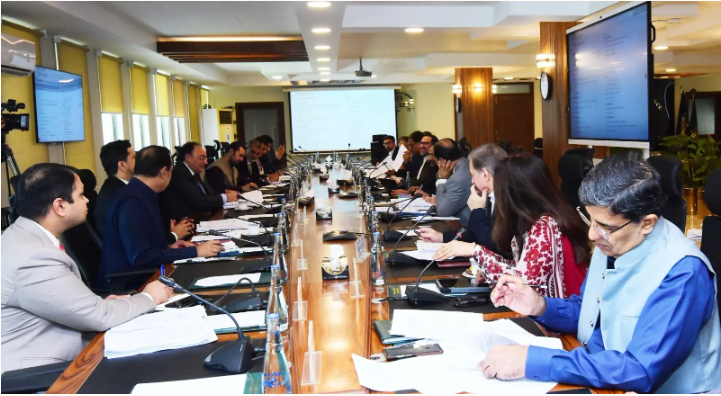The Asian Development Bank (ADB) has upgraded Pakistan’s GDP growth forecast for the fiscal year 2025 (FY2025) to 2.7%, reflecting stronger-than-expected performance in the country’s industrial and services sectors. The adjustment was published in ADB’s latest Asian Development Outlook (ADO) for July 2025, released on Wednesday.
The new figure represents a slight upward revision from earlier projections, signaling a cautiously optimistic outlook for the South Asian economy amid ongoing global and regional uncertainties. The revised growth estimate is based on provisional data indicating a better-than-expected recovery in the non-agricultural sectors of the economy.
According to the ADB report, Pakistan’s economy expanded by 2.7% during FY2025, which ended on June 30, 2025. This growth was primarily driven by a noticeable uptick in industrial production and resilience in the services sector. These gains came despite expected contractions in agricultural output, which had earlier dampened expectations for a stronger overall recovery.
“The revised growth forecast in Pakistan accounted for the higher-than-expected uptick in the industry and services sectors, even as the expected declines in agricultural output come to pass,” the ADO noted.
The industrial sector, supported by increased energy availability, improved domestic demand, and greater policy support, has shown signs of revival. Meanwhile, the services sector, which includes wholesale, retail trade, transport, and finance, also recorded better performance than anticipated.
One of the more encouraging signs from the ADB report is the sharp decline in inflationary pressures in Pakistan. The report highlighted a significant deceleration in both food and non-food prices over the first 11 months of FY2025, prompting the ADB to lower its inflation forecast for the year.
“In Pakistan, the accelerated decline in food and nonfood prices for the first 11 months of FY2025 revised the inflation forecast for FY2025 downward,” the report stated. However, it maintained its inflation outlook for FY2026, anticipating price stability in the coming months.
This downward revision in inflation is expected to provide some relief to consumers and may also create policy space for monetary easing, which could further support private investment and job creation.
While Pakistan’s outlook saw a slight improvement, the ADB has revised its overall growth forecast for developing Asia and the Pacific downward, reflecting increasing global economic headwinds. The bank now expects regional growth to slow to 4.7% in 2025, a 0.2 percentage point drop from its April forecast. For 2026, growth is projected at 4.6%, also slightly lower than earlier estimates.
Several factors are driving this revision:
• Rising US tariffs and escalating global trade tensions
• Weaker domestic demand across key economies
• Continued geopolitical instability that could disrupt supply chains and spike energy prices
• Worsening outlook for China’s property market, which could ripple through regional economies
“Asia and the Pacific have weathered an increasingly challenging external environment this year,” said ADB Chief Economist Albert Park. “But the economic outlook has weakened amid intensifying risks and global uncertainty.”
In terms of South Asia, the ADB has marginally revised its regional growth forecast for 2025 down to 5.9%, compared to 6.0% in the previous outlook. The GDP forecasts for India and Sri Lanka have both been trimmed due to the indirect effects of U.S. tariff policies, which are likely to impact export competitiveness and investment sentiment.
Despite the regional slowdown, Pakistan’s performance stands out due to its surprising resilience in non-agricultural sectors and improved inflation trends. However, the country still faces structural challenges, including:
• Low investment-to-GDP ratio
• Weak productivity growth
• Fiscal consolidation constraints
• External financing vulnerabilities
While the upward revision to 2.7% offers some encouragement, Pakistan’s economic recovery remains fragile. Sustainable long-term growth will depend on continued policy reforms, enhanced fiscal discipline, and support for agricultural modernization to address ongoing challenges in rural productivity.
The government’s engagement with international financial institutions like the International Monetary Fund (IMF) and ADB will be critical in shaping the macroeconomic environment going forward.
For detailed insights into Pakistan’s economic performance, readers can view the full Asian Development Outlook report on ADB’s official website.




